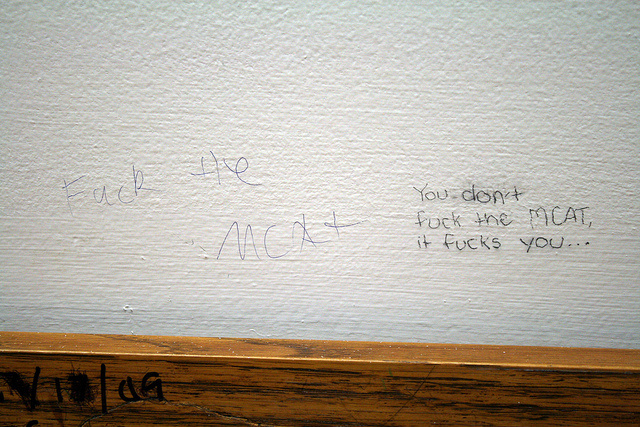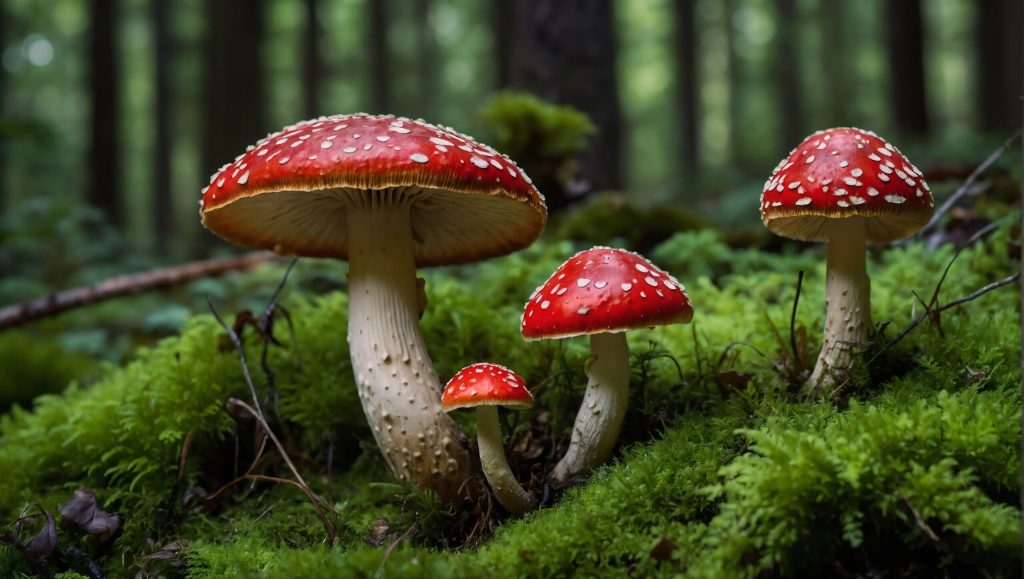“I remember one party where I must have had sex with about 30 people,” says Denholm, a beautiful young gay man reminiscing about his chemsex days. “There was this box of toys… I’m not even that into sex toys, but off my face on m-cat I found myself gradually increasing and increasing the size. Then I woke up the next day, took another look and was like, ‘How the fuck did I get that in there?’ I probably wouldn’t have done that without the mephedrone.”
Dear old mephedrone. M-cat, drone, bubble, “meow meow” – the formerly-legal high that nobody bar tabloid journalists actually called “meow meow”. The white powder that smells faintly of cat piss, defined the UK’s party scene from 2008 to 2010 and caused a media hysteria that kickstarted the process of the government banning all psychoactive substances..
Videos by VICE
In 2010 the drug was the fourth most popular among British clubbers; it’s now used almost exclusively on the gay chemsex circuit, thanks to its chemical aphrodisiac qualities and the fact it keeps you awake and alert. So where did it come from and how did it fall so out of favour?
The active agent in mephedrone is a form of cathinone, a substance that occurs naturally in khat, the mildly stimulative root chewed all over the Horn of Africa. The exponentially stronger “substituted cathinone” molecule in mephedrone was re-synthesised in 2003 by the legendary Israeli underground chemist Dr Zee, but the explosion in drone’s popularity in the late-2000s was down to a different source altogether: the War on Drugs itself.
In June of 2008 Cambodian authorities seized and destroyed 33 tons of Safrole, a key precursor chemical in MDMA. This quantity was enough to produce around 245 million ecstasy pills, so its seizure had huge reverberations throughout the international drugs market. In 2009 the purity of ecstasy sold in the UK plummeted from roughly 60 percent to 22 percent. In 2010, almost all the ecstasy seized in the UK contained no MDMA at all. At the same time, the quality of cocaine was running at historical lows.
This pretty much set the scene for mephedrone – a drug described by most users as feeling like a mixture of MDMA and coke, and which people could order cheaply and easily off the internet because it was completely legal, sold as “plant food” on sites with names like legalchems.co.uk, or plantfoodbuzz.com. No surprises, then, that people went nuts for it.
“The summer of 2009 was pretty insane,” says Andre, a former mephedrone enthusiast. “That stuff was everywhere. It made your body feel crazy and tingly, and gave you these really intense rushes of energy. And obviously made you horny as fuck.”
During the period Andre describes it seemed like every club, house party and festival in Britain was awash with the stuff. Maybe because it was legal people were less shy about chopping up lines in public – but throughout that year, where previously one would have seen clubbers shuffling around with great difficulty after taking too much ketamine, you now had super-energised, loved up drone-heads bouncing around in their own personal rush zone.
This presented an opportunity for amateur dealers. I spoke to Josh, who put himself through two years of university by selling m-cat out of his flat in south London. “Me and my mate used to buy it online in bulk from Nanjing, China for £3 a gram, then just go from house party to house party and sell it for £15 a gram after hours, when people had run out and wanted a bit more,” he says. “People just loved it. It started out as just other students in London, but soon it was guys coming in from the suburbs or Kent for a night out. It paid my rent for a year, and I went on a bunch of holidays, always paying cash.”
The explosion of this new legal high had various knock-on effects, most noticeably the unprecedented drop in deaths from cocaine use. Neil Woods, who worked as an undercover drugs cop for 14 years, tracked the phenomenon closely. “As a police drugs expert I followed the stats and the intel. The only year since the Misuse of Drugs Act 1971 that cocaine deaths have actually fallen is the year that mephedrone was at its most popular, 2009,” he says. “Cathinone is far less toxic than street cocaine, and mephedrone was generally weighing in at 99.8 percent pure, whereas the average 20 percent pure cocaine had as many as 11 different adulterants.”
Mephedrone wasn’t just popular in the UK – it took off in various countries around the world – but it was here that the inevitable backlash began. The Sun led with a story about a 19-year-old who had supposedly ripped off his own scrotum while on drone. It turned out this was a joke someone had posted on the message board of a website called mephedrone.com. Then came a huge outcry over the deaths of two teenagers, reportedly from mephedrone – who turned out to have actually been taking the heroin substitute methadone. Mephedrone and methadone are at opposite ends of the chemical spectrum, but what’s basic journalistic accuracy when reporting young people’s deaths?
Soon, the tabloid press had rechristened the drug “meow meow” and turned a party fad into a manufactured crisis.

(Photo: Flickr user Quinn Anya)
All this isn’t to say that mephedrone is harmless; of course it isn’t. The drug was banned before proper laboratory experimentation could be done, but there are obvious repercussions to your health – notably how terrible you look and feel after doing it for any period of time. Even Josh the dealer wrestled with how he saw some people reacting to his product. “Most people were OK and could do it in moderation – like anything else,” he says. “But there was the occasional case where someone would be coming around every day. They’d lose shitloads of weight – they ended up a mess. Some people had to drop out of uni or repeat a year because of it. That was the dark side.”
By April of 2010, looking to appear “tough on drugs” before the general election, the Labour government banned mephedrone. Several members of the Advisory Council on the Misuse of Drugs resigned at this obvious knee jerk reaction to tabloid reporting. But, in fairness, the ban sort of worked – people did largely stop snorting m-cat. And then they just started snorting cocaine again instead, so the cocaine deaths that had decreased in 2009 started to climb back up, and have been around the same level ever since.
The ban was also great news for dealers. Josh recalls: “It was only when it became illegal that things got really good. We were reading The Sun and all the chat online. We knew it was going to become illegal, so we stocked up. After that we bumped it to £20 a gram and started cutting it with baking soda. We didn’t even have to go around the parties any more, people started coming to us. I guess we made around £30,000.”
Josh is clear that he was only ever running a small operation for students. But as Neil Woods notes, the effect on the criminal underworld was serious. “While mephedrone was legal, I recall police intelligence of disgruntled cocaine dealers calling in debts due to a loss of business. With the ban, it was organised crime groups that took the benefit – a huge new market was simply gifted to them on a plate.”
The other effect of the mephedrone ban was a massive intensification of the cat-and-mouse game that underground scientists had been playing with the authorities for years, making minute tweaks to chemical compounds before law enforcement had a chance to ban them. This led to the explosion of new research chemicals (or “bath salts”, as the American press dubbed them), highly unpredictable chemicals marketed as legal analogues of conventional drugs: “Gocaine”, for instance, or “China White”.
It was the rise in popularity of these drugs that prompted the introduction of the Psychoactive Substances Act in 2016, a Home Office bill banning any substance which “by stimulating or depressing the person’s central nervous system […] affects the person’s mental functioning or emotional state”, meaning the list of banned substances is potentially open-ended. The move was described by former Chief Government Drugs Advisor David Nutt as “arguably the worst piece of legislation in living memory”.
Once again, control of all these newly banned substances was handed to organised criminals on a platter. Henry Fisher from the drug policy think tank VolteFace is clear: “The demand for legal highs has been displaced to the illegal market… into the hands of street dealers.” Neil Woods is even more scathing: “The hunt for new substances only happened because of the mephedrone ban, offering huge incentives to organised crime. The Psychoactive Substances Act was inevitable, but ridiculous – ban imaginary drugs, as if banning tangible ones had ever made a difference.”
So where does that leave mephedrone now? Well, it’s still about – a study by The Lancet released in April of last year found that use of the drug is rising again in London, among recreational drugs users; intravenous drug users combining it with heroin; and men who have sex with men.
It’s that last group in which the drug’s use is most visible, in the chemsex scene, where drone and GHB have emerged as the two most favoured types of party fuel. I ask Denholm why mephedrone in particular is so popular for chemsex. “There’s a kind of relentlessness to mephedrone – a detached relentlessness,” he says. “Where MDMA makes you lovely and friendly, drone makes you excited, but also detached from the world. Maybe it seems like a remedy to what lots of gay men feel – a kind of unlovability, being brought up with constant background homophobia. It’s a way of escaping everything and just feeling sexy and elated.”
Another chemsex partier, Danny, puts it more bluntly: “Mephedrone? All I know is it just makes you want to fuck everything. Hope that’s helpful.”
And in that one phrase, maybe he has summed up not only the appeal and history of mephedrone, but also the response of lawmakers to the entire issue of “legal highs” – fucking everything up while trying to be helpful.




